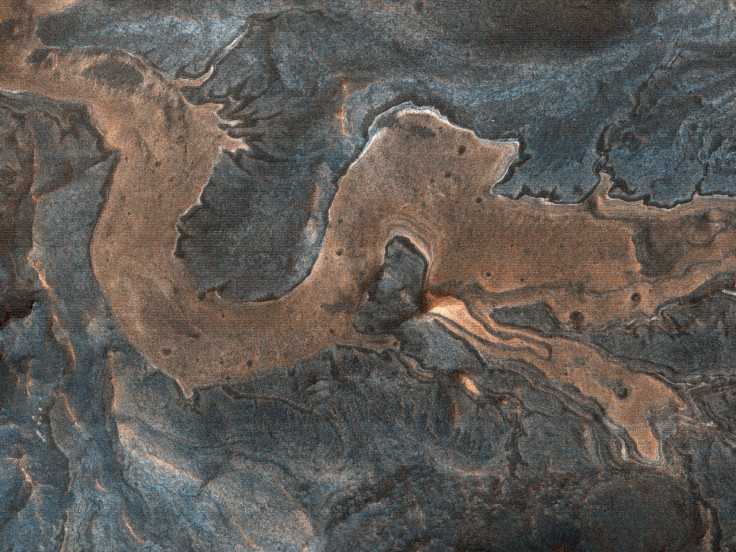NASA Shares Image Of Massive ‘Dragon’ On Mars Photographed By Orbiter

KEY POINTS
- NASA's latest image resembles a dragon on Mars
- The image was captured by the MRO
- The dragon-like image was made by natural factors on Mars
NASA’s current mission on Mars shared a stunning photo of a dragon-like image on the surface of the Red Planet. According to scientists working with the agency, the bizarre image was created by various geological processes on Mars.
The stunning photo was captured by NASA’s Mars Reconnaissance Orbiter (MRO). This is a robotic spacecraft launched by NASA in 2005 to observe the Red Planet from its orbit.
The MRO’s latest image was captured using its High Resolution Imaging Experiment (HiRISE) camera, which is operated by the University of Arizona’s Lunar and Planetary Laboratory. It was taken as the spacecraft was flying about 258 kilometers from the surface of the Red Planet.
At first glance, the image looks like a bronze-colored dragon lying on the ground. Several features such as the head, eyes nostrils, and elongated body of the dragon can be clearly seen in the photo. Other notable features, such as horns and limbs, are also visible in the image.
HiPOD 11 Apr 2020: Year of the Dragon
— HiRISE: Beautiful Mars (NASA) (@HiRISE) April 11, 2020
We rotated this image of light-toned blocky material in southwestern Melas Chasma because from this perspective, it resembles a fabled Chinese dragon.
NASA/JPL/UArizonahttps://t.co/6wGlHKmrN5 #Mars #science pic.twitter.com/bPF9Kk1Uxb
According to the HiRISE team, the image was taken in a region on Mars known as Melas Chasma. It is a canyon that contains deposits of light-toned and dark-toned blocks. These blocks vary in size, with diameters reaching up to 500 meters.
“Along the floor of Melas Chasma is an unusual blocky deposit composed of light-toned blocks in a darker matrix,” the University of Arizona stated in a blog post. “The high resolution of the HiRISE image reveals layers only a few meters thick in some of the light-toned blocks. The blocks vary in size but most fall between 100 to 500 meters in diameter.”
As explained by University of Arizona scientists, the main image of the dragon-like sculpture was made by the different colored blocks in the area. The image then became more detailed due to various natural factors on Melas Chasma, such as powerful winds and tectonic activity.
“Although most blocks appear rounded, others have angular edges and can be very elongated,” the university stated. “The morphologies of the blocks suggest ductile deformation, such as from a flow or by tectonic disruption after emplacement. Windblown (aeolian) ripples are interspersed between the blocks in the darker matrix.”
© Copyright IBTimes 2024. All rights reserved.





















